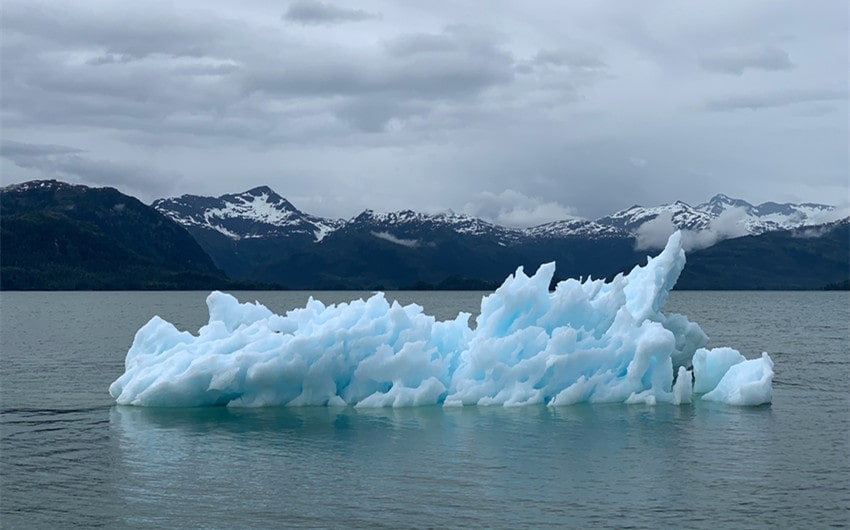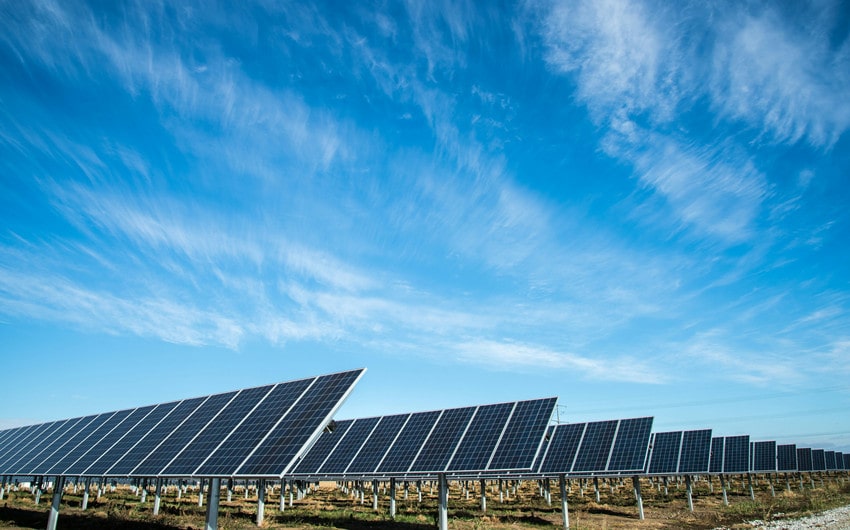Discover 10 Key Climate Change Questions and Answers Today
Curious about climate change and its impact on your life? You’re not alone. Many people are asking important questions about what’s happening to our planet and what it means for our future.
In this article, we’ll explore some of the most pressing climate change questions and answers. From understanding what causes climate change to discovering what we can do to help, this guide is here to provide you with the information you need. Let’s dive in and find out more about this critical issue together.
1. What is Climate Change?
Climate change refers to significant, long-term changes in the average temperature, precipitation, and wind patterns of the Earth. It includes global warming caused by human emissions of greenhouse gases and the resulting shifts in weather patterns. While natural processes like volcanic eruptions and solar variations can cause climate change, the rapid warming observed since the late 19th century is mainly due to human activities such as burning fossil fuels and deforestation.
Unlike weather, which describes short-term atmospheric conditions, climate represents the average weather patterns over long periods, typically 30 years or more. This long-term view makes climate change a critical issue requiring substantial societal and environmental adjustments.
2. What Causes Climate Change?
Climate change is driven by a combination of human activities and natural factors.
Human Activities
The primary cause of the current climate change is human activities. These include:
- Burning Fossil Fuels: The combustion of coal, oil, and natural gas for energy and transportation releases large amounts of carbon dioxide (CO2) and other greenhouse gases into the atmosphere. These gases trap heat, causing global temperatures to rise.
- Deforestation: Trees absorb CO2, and when forests are cleared for agriculture or urban development, this carbon-storing capacity is lost. Additionally, the process of deforestation itself releases stored carbon into the atmosphere, further contributing to the greenhouse effect.
- Industrial Processes: Many industrial activities, such as cement production and chemical manufacturing, emit various greenhouse gases, including methane (CH4) and nitrous oxide (N2O), which are much more potent than CO2 in trapping heat.
Natural Factors
In addition to human activities, natural factors also influence climate change, though their impact is relatively minor compared to human-induced changes. These include:
- Volcanic Eruptions: Large eruptions can inject significant amounts of ash and sulfur dioxide into the atmosphere, which can temporarily cool the Earth by reflecting sunlight away from the surface. However, the overall effect of volcanic activity on long-term climate change is relatively small.
- Solar Radiation: Changes in the amount of energy the Earth receives from the sun can influence the climate. Variations in solar radiation occur due to natural cycles such as sunspot activity. However, these changes are not sufficient to explain the rapid warming observed in recent decades.
3. How Does Climate Change Affect the Planet?
Climate change has far-reaching impacts on our planet, influencing various natural systems and processes. Here are some of the most significant effects:
Rising Temperatures
One of the most immediate and noticeable effects of climate change is the increase in global temperatures. This warming trend, often referred to as global warming, affects ecosystems, weather patterns, and the overall health of the planet. Higher temperatures can lead to heatwaves, affecting both human health and wildlife. Additionally, warmer temperatures can disrupt agricultural productivity, causing crop failures and threatening food security.

Melting Ice Caps and Glaciers
As global temperatures rise, ice caps and glaciers around the world are melting at an alarming rate. This melting contributes to rising sea levels and the loss of habitat for polar species such as penguins and polar bears. The reduction in ice also affects global weather patterns and ocean currents, which are critical for maintaining the climate balance. Furthermore, the loss of ice in the Arctic and Antarctic regions reduces the Earth’s albedo (reflectivity), leading to even more heat absorption and accelerated warming.
Rising Sea Levels
The melting of ice caps and glaciers, combined with the thermal expansion of seawater as it warms, results in rising sea levels. This phenomenon poses a significant threat to coastal communities around the world. Rising sea levels can lead to increased flooding, erosion of shorelines, and the intrusion of saltwater into freshwater resources.
In extreme cases, entire communities may be displaced, leading to climate refugees. Low-lying areas and small island nations are particularly vulnerable to these changes, facing existential threats from the encroaching sea.
Extreme Weather Events
Climate change is linked to an increase in the frequency and severity of extreme weather events. These events include hurricanes, typhoons, droughts, heavy rainfall, and wildfires. Warmer ocean temperatures can fuel more powerful storms, while altered precipitation patterns can lead to prolonged droughts in some regions and intense flooding in others.
These extreme weather events have devastating impacts on communities, infrastructure, and ecosystems, causing loss of life, economic damage, and long-term environmental degradation.
4. How Does Climate Change Affect Humans?
Climate change significantly impacts human societies in various ways, affecting health, economies, and social structures. Here are the primary areas of concern:
Health Impacts
Climate change poses several direct and indirect threats to human health:
- Heat-Related Illnesses: Rising global temperatures increase the frequency and intensity of heatwaves, leading to a higher incidence of heat-related illnesses and deaths. Vulnerable populations, such as the elderly, children, and those with pre-existing health conditions, are particularly at risk.
- Respiratory Issues: Increased temperatures and changing weather patterns can worsen air quality, leading to higher levels of pollutants like ozone and particulate matter. Poor air quality exacerbates respiratory conditions such as asthma and chronic obstructive pulmonary disease (COPD).
- Vector-Borne Diseases: Warmer temperatures and altered precipitation patterns expand the habitats of disease-carrying vectors like mosquitoes and ticks. This increases the spread of diseases such as malaria, dengue fever, and Lyme disease.
- Water and Food Safety: Changes in climate can affect the availability and quality of water and food. Extreme weather events can contaminate water supplies, while temperature shifts can increase the risk of foodborne illnesses by promoting the growth of harmful bacteria.
Economic Impacts
The economic consequences of climate change are profound and multifaceted:
- Damage to Infrastructure: Extreme weather events, such as hurricanes, floods, and wildfires, can cause significant damage to infrastructure, including roads, bridges, buildings, and utilities. The cost of repairing and rebuilding after such events can strain public and private finances.
- Agricultural Disruption: Climate change affects agricultural productivity by altering growing seasons, reducing crop yields, and increasing the prevalence of pests and diseases. This can lead to higher food prices, food shortages, and increased pressure on farmers and rural communities.
- Energy Costs: As temperatures rise, the demand for energy to cool homes and businesses increases, leading to higher energy costs. Additionally, extreme weather events can disrupt energy supplies, causing further economic strain.
- Insurance Costs: The increased frequency and severity of natural disasters can lead to higher insurance premiums and reduced availability of coverage for individuals and businesses in high-risk areas.
Social Impacts
Climate change also has significant social implications:
- Displacement and Migration: Rising sea levels, extreme weather events, and resource scarcity can force communities to relocate. This displacement creates climate refugees who face challenges in finding new homes, employment, and access to services. Displacement can also lead to overcrowding in urban areas and increased competition for resources.
- Resource Conflicts: As climate change exacerbates resource scarcity, such as water and arable land, conflicts over these resources may become more frequent and intense. Competition for dwindling resources can lead to social unrest, political instability, and even violence.
- Mental Health: The stress and anxiety associated with the impacts of climate change, including the loss of homes, livelihoods, and loved ones, can take a toll on mental health. Communities affected by natural disasters often experience higher rates of depression, anxiety, and post-traumatic stress disorder (PTSD).
5. How Do Scientists Study Climate Change?
Scientists use a variety of methods to study climate change, combining historical data, advanced technology, and field research to understand past, present, and future climate conditions. Here are some of the key approaches:
Climate Models and Simulations
Climate models are sophisticated computer programs that simulate the Earth’s climate system. These models incorporate data from various sources to predict future climate conditions based on different scenarios of greenhouse gas emissions.
- Functionality: Climate models use mathematical equations to represent physical processes in the atmosphere, oceans, land surface, and ice. They simulate how these components interact over time.
- Scenarios: Scientists run simulations under various scenarios, such as low, medium, and high greenhouse gas emissions, to project potential future climate outcomes. This helps in understanding the potential range of climate impacts and guiding policy decisions.
- Validation: Models are validated by comparing their outputs with observed data, ensuring they can accurately replicate past and present climate conditions.
Historical Climate Data
Scientists study past climate conditions using proxy data from natural recorders of climate variability, such as ice cores, tree rings, sediment layers, and coral reefs.
- Ice Cores: Ice cores drilled from glaciers and ice sheets provide detailed records of past climate. Layers of ice trap air bubbles, which contain samples of the atmosphere from different periods. Analyzing the composition of these bubbles, including greenhouse gas concentrations and isotopic ratios, helps reconstruct past temperatures and atmospheric conditions.
- Tree Rings: The width and density of tree rings reflect annual growth conditions, influenced by temperature and precipitation. By examining tree rings from different periods, scientists can infer past climate variations.
- Sediment Layers: Sediments deposited in lakes, oceans, and other bodies of water accumulate over time, capturing pollen, fossils, and chemical signatures that reflect past climate conditions.
- Coral Reefs: Corals build their skeletons using calcium carbonate, which incorporates oxygen isotopes that vary with water temperature. Analyzing these isotopes provides information about past sea surface temperatures.
Satellite Observations
Satellites orbiting the Earth provide critical data for monitoring current climate conditions and detecting changes over time.
- Temperature Measurements: Satellites measure surface and atmospheric temperatures globally, providing comprehensive data that helps track warming trends.
- Sea Level Monitoring: Satellites equipped with altimeters measure sea level changes with high precision, helping to monitor the effects of melting ice and thermal expansion of seawater.
- Ice Extent and Thickness: Remote sensing technologies on satellites measure the extent and thickness of sea ice and glaciers, providing data on ice loss and its contributions to sea level rise.
- Atmospheric Composition: Satellites monitor greenhouse gas concentrations, aerosol levels, and other atmospheric components, helping scientists understand the factors driving climate change.
Field Studies and Experiments
Field studies involve on-the-ground research and experiments to collect data and observe climate-related processes in real time.
- Weather Stations: Networks of weather stations around the world collect data on temperature, precipitation, wind speed, and other climate variables. This data is crucial for understanding regional climate patterns and trends.
- Oceanographic Surveys: Research vessels and buoys collect data on ocean temperatures, salinity, currents, and marine ecosystems. This information helps scientists study the ocean’s role in climate regulation and the impacts of climate change on marine life.
- Ecological Studies: Field studies of plants, animals, and ecosystems provide insights into how climate change affects biodiversity, migration patterns, and species interactions.
- Experimental Research: Controlled experiments, such as those conducted in climate chambers or outdoor plots, help scientists understand the responses of plants, soils, and ecosystems to changes in temperature, CO2 levels, and other climate variables.
6. What Can Be Done to Mitigate Climate Change?
Mitigating climate change requires a concerted effort across multiple sectors to reduce greenhouse gas emissions and enhance the planet’s ability to absorb carbon dioxide. Here are some key strategies:
Renewable Energy Sources

Shifting from fossil fuels to renewable energy sources is one of the most effective ways to reduce greenhouse gas emissions.
- Solar Energy: Solar panels convert sunlight into electricity, offering a clean and abundant energy source. Advancements in technology and decreasing costs have made solar energy more accessible and affordable. For homeowners or businesses seeking efficient ways to store excess solar power, solar battery storage provides a reliable backup, making renewable energy systems more effective.
- Wind Energy: Wind turbines harness the power of wind to generate electricity. Wind energy is a rapidly growing sector and is highly effective in regions with strong and consistent winds.
- Hydropower: Using the energy of flowing water, hydropower is a well-established renewable energy source that provides significant amounts of electricity globally.
- Geothermal Energy: Geothermal plants use heat from the Earth’s interior to generate electricity. This source is particularly effective in areas with high geothermal activity, such as Iceland and parts of the United States.
- Biomass Energy: Biomass energy is produced from organic materials, such as plant and animal waste. While it can be a renewable source, its sustainability depends on how the biomass is sourced and managed.
Energy Efficiency Measures
Improving energy efficiency in homes, industries, and transportation can significantly reduce energy consumption and emissions.
- Building Insulation: Proper insulation in buildings reduces the need for heating and cooling, leading to lower energy use and emissions. Using energy-efficient windows, doors, and construction materials further enhances this effect.
- Energy-Efficient Appliances: Using appliances and lighting that consume less energy for the same performance, such as LED bulbs and ENERGY STAR-rated products, reduces electricity use and emissions.
- Industrial Efficiency: Implementing energy-efficient processes and technologies in industries can drastically cut emissions. This includes upgrading machinery, optimizing production processes, and recycling waste heat.
- Transportation: Promoting the use of public transport, cycling, walking, and electric vehicles (EVs) reduces reliance on fossil fuels. Improving fuel efficiency in cars and trucks also contributes to lower emissions.
Reforestation and Afforestation
Enhancing the planet’s ability to absorb carbon dioxide through reforestation and afforestation is vital.
- Reforestation: Reforestation involves replanting trees in areas where forests have been cut down or degraded. This helps restore ecosystems, sequester carbon dioxide, and support biodiversity.
- Afforestation: Afforestation is the process of planting trees in areas that have never been forested. New forests can act as significant carbon sinks, absorbing CO2 from the atmosphere and mitigating climate change.
- Urban Greening: Planting trees and creating green spaces in urban areas can improve air quality, reduce the urban heat island effect, and enhance the well-being of residents.
Policies and International Agreements
Effective climate action requires strong policies and international cooperation.
- Paris Agreement: The Paris Agreement is a landmark international accord adopted in 2015 to limit global warming to well below 2 degrees Celsius above pre-industrial levels, with efforts to limit the increase to 1.5 degrees Celsius. Countries commit to national targets (Nationally Determined Contributions) and report on their progress.
- Carbon Pricing: Implementing carbon pricing mechanisms, such as carbon taxes or cap-and-trade systems, provides economic incentives for reducing emissions. These policies encourage businesses and individuals to invest in cleaner technologies and reduce their carbon footprint.
- Renewable Energy Subsidies: Governments can support the adoption of renewable energy by providing subsidies, tax credits, and grants for renewable energy projects and research.
- Regulations and Standards: Setting stringent emissions standards for vehicles, industries, and power plants helps reduce pollution and promote cleaner technologies. Building codes and energy efficiency standards also drive improvements in energy use.
Public Awareness and Education
Raising public awareness about climate change and its impacts is crucial for driving action.
- Education Programs: Integrating climate change education into school curricula helps foster a generation that understands and values sustainability.
- Public Campaigns: Awareness campaigns can inform the public about practical steps they can take to reduce their carbon footprint, such as reducing waste, conserving energy, and supporting sustainable products.
- Community Initiatives: Local communities can lead by example, implementing sustainable practices and encouraging residents to participate in green projects like community gardens and recycling programs.
7. What Can Individuals Do to Help Combat Climate Change?
Every individual has a role to play in combating climate change. By making conscious choices in our daily lives, we can significantly reduce our carbon footprint and contribute to a more sustainable future. Here are some key actions individuals can take:
Reducing Carbon Footprint
Lowering your carbon footprint involves making lifestyle changes that reduce greenhouse gas emissions.
- Using Public Transport: Opt for public transportation, cycling, or walking instead of driving. Carpooling and ride-sharing services also help reduce the number of vehicles on the road, decreasing emissions.
- Reducing Waste: Minimize waste by adopting the three R’s: Reduce, Reuse, and Recycle. Avoid single-use plastics, buy products with minimal packaging, and compost organic waste to reduce landfill contributions.
- Energy Conservation: Save energy at home by turning off lights and electronics when not in use, using energy-efficient appliances, and insulating your home to reduce heating and cooling needs. Consider installing a programmable thermostat to optimize energy use.
- Adopting a Plant-Based Diet: Reducing meat and dairy consumption can significantly lower your carbon footprint. Animal agriculture is a major source of methane emissions, so incorporating more plant-based foods into your diet helps reduce these emissions.
- Water Conservation: Use water-saving fixtures, fix leaks, and be mindful of water use. Reducing water consumption conserves energy used in water treatment and distribution.
Supporting Sustainable Products and Companies
Choosing to support businesses that prioritize sustainability encourages broader environmental responsibility.
- Sustainable Products: Purchase products made from recycled materials, organic ingredients, or sustainable sources. Look for certifications such as Fair Trade, Rainforest Alliance, and Energy Star that indicate environmentally friendly practices.
- Local and Seasonal Foods: Buy local and seasonal produce to reduce the carbon footprint associated with transporting food over long distances. Supporting local farmers also boosts the local economy and promotes sustainable agricultural practices.
- Eco-Friendly Brands: Support companies that implement green practices, such as reducing waste, conserving energy, and using renewable resources. Research brands’ sustainability efforts and choose those committed to environmental stewardship.
- Ethical Investments: Consider investing in companies and funds that prioritize environmental, social, and governance (ESG) criteria. Ethical investing helps drive capital towards businesses that are making positive environmental impacts.
Advocating for Climate-Friendly Policies
Engaging in advocacy and supporting policies that address climate change can lead to systemic changes.
- Voting: Vote for candidates and policies that prioritize climate action and environmental protection. Hold elected officials accountable for their stance on climate issues and encourage them to support sustainable initiatives.
- Community Involvement: Get involved in local environmental groups and initiatives. Participate in community clean-ups, tree-planting events, and sustainability workshops. Collaborating with others amplifies your impact and fosters a sense of community.
- Education and Awareness: Raise awareness about climate change by sharing information with friends, family, and social networks. Educate others about the importance of sustainability and how they can contribute to climate action.
- Petitions and Campaigns: Sign petitions, participate in campaigns, and write to policymakers to advocate for stronger climate policies. Collective action can influence government decisions and lead to meaningful change.
- Supporting Renewable Energy: Advocate for renewable energy projects in your community. Support initiatives that promote solar, wind, and other renewable energy sources. Consider installing renewable energy systems, such as solar panels, on your property if feasible.
8. Why Is Climate Change a Global Issue?
Climate change is a global issue that affects every country and region, requiring a unified response. Here’s why:
Global Interdependence
- Trade: Disruptions in supply chains and production due to extreme weather can affect global markets, leading to shortages and price fluctuations.
- Shared Resources: Climate change impacts shared natural resources like water and fisheries, leading to competition and potential conflicts. Sustainable management requires international cooperation.
- Human Mobility: Climate-induced displacement and migration can strain resources and create social tensions in receiving areas, necessitating global strategies.
Disproportionate Impacts on Vulnerable Regions and Populations
- Geographical Vulnerability: Low-lying coastal areas, small island nations, and regions with fragile ecosystems are particularly at risk from rising sea levels and extreme weather.
- Economic Disparities: Developing countries often lack the resources to effectively respond to climate disasters, leading to severe economic impacts and increased poverty.
- Social Inequities: Marginalized communities, including low-income groups and indigenous peoples, face greater challenges in adapting to climate change due to limited resources and access to decision-making.
The Need for International Cooperation and Solutions
- International Agreements: Agreements like the Paris Agreement set global targets for reducing emissions and foster cooperation among countries.
- Shared Knowledge and Technology: International collaboration allows for the sharing of technology and best practices, with developed countries supporting developing nations in implementing sustainable solutions.
- Global Initiatives: Organizations like the UNFCCC and IPCC facilitate dialogue, monitor progress, and provide a platform for global cooperation on climate action.
9. How Does Climate Change Impact Biodiversity?
Climate change has profound effects on biodiversity, disrupting ecosystems and threatening species across the globe. Here are the key ways it impacts biodiversity:
Habitat Loss and Fragmentation
- Destruction of Habitats: Rising temperatures, changing precipitation patterns, and extreme weather events can destroy natural habitats. For example, coral reefs are bleaching and dying due to warmer ocean temperatures, and forests are being decimated by wildfires.
- Fragmentation: As habitats shrink and become fragmented, species that depend on large, contiguous areas for survival and reproduction are at risk. Fragmentation can isolate populations, making it harder for them to find mates, access resources, and maintain genetic diversity.
Changes in Migration Patterns
- Altered Timing: Climate change affects the timing of migration, breeding, and feeding patterns. Many species rely on specific environmental cues to migrate or reproduce. Changes in temperature and weather patterns can lead to mismatches in timing, disrupting these processes.
- New Routes and Destinations: As climates shift, species may be forced to migrate to new areas in search of suitable habitats. This can lead to conflicts with other species, competition for resources, and increased vulnerability to predators and human activities.
Threats to Endangered Species
- Increased Vulnerability: Endangered species are particularly susceptible to climate change because they often have limited ranges, specific habitat requirements, and small populations. Even slight changes in their environment can push them closer to extinction.
- Loss of Critical Habitats: Climate change can alter or destroy the specific habitats that endangered species rely on. For example, polar bears depend on sea ice for hunting, and its loss due to warming poses a severe threat to their survival.
Impact on Ecosystems and Food Chains
- Ecosystem Disruption: Changes in temperature and precipitation can alter the structure and function of ecosystems. Species composition can change, leading to the dominance of invasive species and the decline of native ones.
- Food Chain Imbalances: Disruptions in one part of the food chain can have cascading effects. For instance, if plankton populations decline due to warmer ocean temperatures, it can affect the entire marine food web, impacting fish, birds, and marine mammals.
10. What Are the Future Projections for Climate Change?
Future projections for climate change indicate significant and far-reaching impacts on the planet. Here are some key projections:
Expected Temperature Increases
- Global Warming: Average global temperatures are expected to rise significantly. The extent of this increase depends on future greenhouse gas emissions, but even with strong mitigation efforts, some warming is inevitable.
- Regional Variations: Temperature increases will not be uniform across the globe. Some regions, such as the Arctic, are expected to warm more rapidly than others, exacerbating local climate impacts.
Predicted Changes in Sea Levels
- Rising Sea Levels: Melting ice caps, glaciers, and the thermal expansion of seawater as it warms will contribute to rising sea levels. This poses a threat to coastal communities, ecosystems, and infrastructure.
- Increased Flooding: Higher sea levels will lead to more frequent and severe coastal flooding, erosion, and saltwater intrusion into freshwater resources, impacting agriculture and drinking water supplies.
Potential for More Extreme Weather Events
- Increased Frequency and Intensity: Climate change is expected to increase the frequency and intensity of extreme weather events such as hurricanes, typhoons, heatwaves, droughts, and heavy rainfall. These events can cause widespread damage to infrastructure, ecosystems, and human communities.
- Unpredictable Patterns: Changing climate patterns can lead to more unpredictable and erratic weather, making it challenging for communities to prepare for and respond to natural disasters.
Long-Term Impacts on Agriculture and Water Resources
- Agricultural Productivity: Changes in temperature, precipitation, and the frequency of extreme weather events can affect crop yields, livestock health, and fisheries. Some regions may experience reduced agricultural productivity, leading to food insecurity.
- Water Availability: Climate change affects the availability and distribution of water resources. Changes in precipitation patterns, melting glaciers, and altered river flows can lead to water shortages, affecting drinking water supplies, agriculture, and industrial use.
- Droughts and Floods: Increased variability in weather patterns can lead to more frequent and severe droughts and floods. These events can damage crops, reduce water quality, and strain water management systems.







